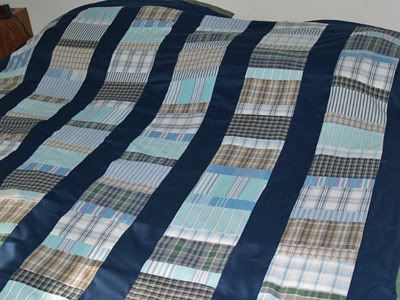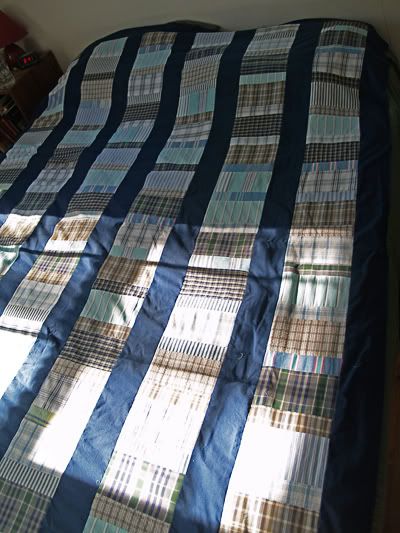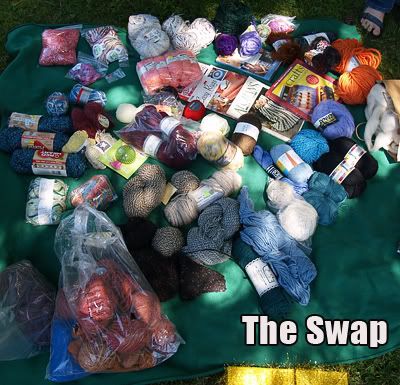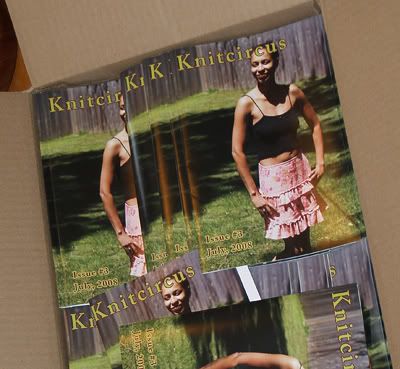
Regular readers know I'm a great fan of thrift shops. One particular store in my area holds a singular fascination for me: The Diggers Outlet, run by St. Vincent de Paul Society. Diggers Outlet is the last-chance store for merchandise that has run through the other thrift shops. Most goods are sold by the pound with only the most cursory sorting: clothes in giant boxes, household items of every type in another section, etc. Diggers Outlet is where you see first-hand the cast off material culture of modern American society: the clothing fads, the electronics that were cutting edge and now are obsolete, the particle board furniture that self-destructs after 5-10 years of regular use, the must-have kitchen gadgets of yesterday, and so on. A trip to Diggers Outlet jars me into thinking about how short our collective attention span really is.
I'm a textile nut. If you read this blog, you probably already know that. For most of human history, textile production has been slow and labor-intensive. Spinning was done on drop spindles and later, by hand on spinning wheels. The Industrial Revolution started the change that continues rippling today: toward higher efficiency in production, cheaper goods, viewing laborers as part of the machinery, toward ever-changing cycles of fashion and the disposable culture they foster. I'm not a rosy romantic about life in the years before the mid-18th century. I know that life was often nasty, brutish, and short, to borrow a phrase. But it was, by and large, more sustainable than the life we now live.
Textile production used to be so labor intensive that textiles had to be preserved and used up. Only the very wealthy could afford to have several sets of clothes. If you have ever made a garment, from fiber to fabric to finished object, either with knitting or weaving, you know how you feel about the resulting item: it's a treasure! If one use doesn't work out, you find a way to reuse it in another that does: unravel the sweater and reknit the yarn into something new or give it to a person it will fit, or
something. Handmade fabric from handmade yarn is not something you want to discard easily.
Mass-produced fabric is so cheap that we generate tons (TONS!) of excess textiles in our society. Unbelievable excess. We shop for and replace clothes with little thought. Some items find their way into the landfills, though they are perfectly usable. Many get donated to charities for resale or distribution to the needy. While searching for images of baled clothing, I found
this article.
In particular, I was struck by this quote:
The need to minimise all waste is more apparent when you consider that :
More than 80% of materials are consumed and waste generated by less than 20% of the world's population.
The growth in the world's population and the spread of wealth is rapidly exacerbating the problem.
In order to sustain human life under the present system, global environmental efficiency will have to increase by as much as 50 times.
The whole concept of product life cycle, design, fashion and the responsibility for re-use have to be reassessed. A culture built on the idea of wastage needs to be dismantled and a new way introduced.
Further search led me to
another eye-opening article.
What if we all tried to stop thinking like
Consumers and redefined ourselves in other terms? What if all our textiles were produced in ways that did not exploit the laborers or the planet? And what if we all recognized that the cost of a basic outfit would be higher, but our expectations about our clothes would be different? We would spend more, but spend more wisely. We would seek quality. We would reuse and re-purpose our textiles. We would choose clothes that wouldn't look dated next year at this time; clothes constructed with future alterations in mind; clothes from quality fabrics that stand up to hard use.
I wonder what our society will look like in 10 years. Or 30. Will we be buried in the excesses of the Industrial Age? Or will we learn to live as though our resources matter?
Note: image found on
Buffalo Export website.












